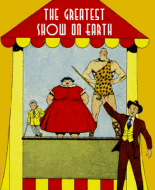The Adventures of Ellery Queen – Crackajack Funnies Archive (Dell)https://comicbookplus.com/?dlid=26171 This is an archive, so here we are only going to get
EQ stories.
I may not do all of these but here we go.
The adventure of the Coffin Clue While the artist is no Toth or Ditko, I quite like what he does.
On the first page we get a different perspective in each panel, and the coloring isn't bad either.
I'm a believer in less word balloons and more illustration, so I like this work.
Although he makes one elementary mistake, when you draw something moving keep it consistent from panel to panel. So the car should always be going in the same direction in every panel.
There is no real surprise in the denouncement here, nobody else is in danger of being murdered, so there is also no suspense. Not engaging.
Adventure of the Blood Red stamp.It's not rocket science to realize there must have been something in one particular copy of the book and the
murderer hadn't yet found it.
A 'Ditko' water tower on a roof is the scene of the attempted murder. Why would the murderer go public?
Stamp collector QQ has already said enough about the modus operandi in this story. Thank you!
'Ellery Queen' in lights. This is a real 'CLUEDO" - 5 weapons of death - which one? or neither?
'The murder watched the act and learned how to tie the knot" Magicians are masters of illusions and don't make it easy to see through the illusion. So, no, don't think so.
But this story works because there is a lot of visual action and emotional suspense.
The snow storynot much to say, but Ellery's dad plays the 'Watson' part in these stories.
'This day in the country' Nice and visual story but yet again we have the car going in two different directions. Yet again Ellery survives a car crashing off a mountain road into rocks, Is he Ellery Queen or Batman?
Panel 4 page 4, according to the word balloons Ellery has a conversation with himself.
'Eastbound to New York' this time Ellery and his dad survive a horrendous Train Crash.
In the next one he survives a plane crash while hanging onto the wing.
Somehow I don't think he went through these disasters in the books.
These kind of 'co-incidences' make sense for comics, they provide lots of visuals and puts the Detective on the spot of the crime quickly and right in the middle of the action.
Maybe the Queen Estate didn't understand that?
Crash said,
Thanks for posting this compilation. I'd never paid much attention to this series. Turns out the stories are entertaining and Bill Ely's art starts good and gets better as the series progresses.
Agreed, although I haven't reviewed every story, stay with the Archive to the end. If all the art is
Bill Ely, you will get to see an artist start off well and mature and grow. He was still working into the early 60's where he did some work for DC.
Also Ellery replaces his Dad with the attractive
Nikki, his secretary.
I enjoyed these, thanks QQ.
 Author
Topic: Reading Group #321 - Ellery Queen (Read 1049 times)
Author
Topic: Reading Group #321 - Ellery Queen (Read 1049 times)
